After the peak of mycoplasma pneumonia in children, adults started again? Special reminder from experts
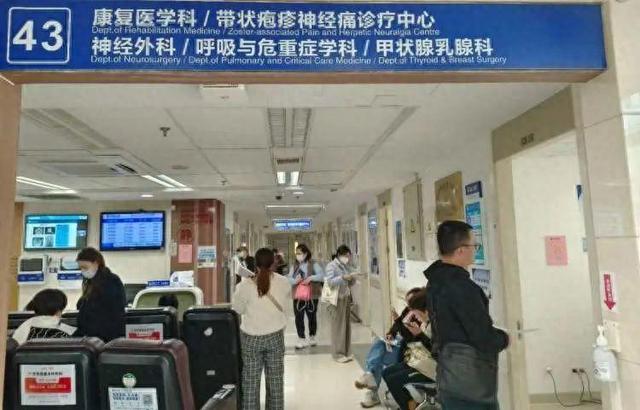







Zhongxin. com, Wuhan, November 2 (Wang Youzhe, Lin Xinyi, Fu Chengcheng) Recently, Hubei University of Economics launched a running App among freshmen to juniors. According to the regulations, students who have run for 30 times will pass. For each additional time, the effective score will be added with 3 points until 100 points. If the substitute runner is found, it will be treated as cheating and the file will be recorded.
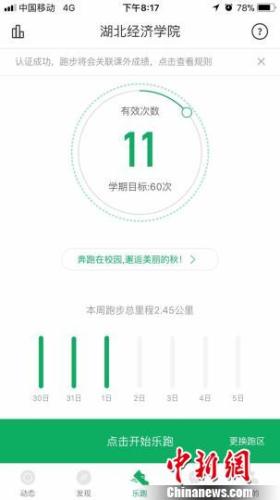
Cui Gaoyuan, vice president of the School’s Sports school of economics and management, said that the scores of freshmen and sophomores using App for running and punching cards accounted for 30% of this semester’s sports scores, and juniors can only participate in the physical fitness test if their scores using App for running and punching cards reach the standard of passing or above. Students have at most one exercise record every day, which is related to sports achievements, and the excess part is only recorded but not related to achievements.

Cui Gaoyuan said that the purpose of linking the punch card score with the final sports score is to encourage students to get out of the dormitory, strengthen exercise, cultivate students’ healthy concept of loving sports and advocating sports, form good exercise habits and improve their physical fitness.

Students can check the map and choose the best route to the distribution point according to the site conditions. Photo by Huang Siqi
"I used to exercise very little. Since the school implemented the running APP, everyone is running and unconsciously wants to run two steps." Huang Ziwei, a freshman at the school, said that he insisted on punching cards every day and his running enthusiasm was much stronger than before.
It is worth noting that the school has also formulated an effective standard for single exercise. Boys should run for 1 km at a time, and the running pace should be within the range of 3-9min/km. If a girl’s running mileage reaches 0.8 km at a time and her running pace is within the range of 3-9min/km, her performance will be effective. Cui Gaoyuan said that the introduction of this regulation is mainly to ensure the safety of students, and secondly to achieve sports effects.
Huang Siqi, a sophomore in the school of finance, said that under this sports standard, you can complete punching as long as you walk faster. However, she also said that this punching APP has a task nature and may affect the quality of sports.
In this regard, Cui Plateau said that in the background, every time the APP is used to run and punch in, it is set to "random allocation", in order to reduce or even avoid the phenomenon of running on behalf of others. In addition, the school will also conduct supervision through inspection teams, student reports, and big data comparison analysis. If students are found to have "violation of discipline" such as running on behalf of others, once verified, they will be dealt with as cheating in the exam and recorded. (End)
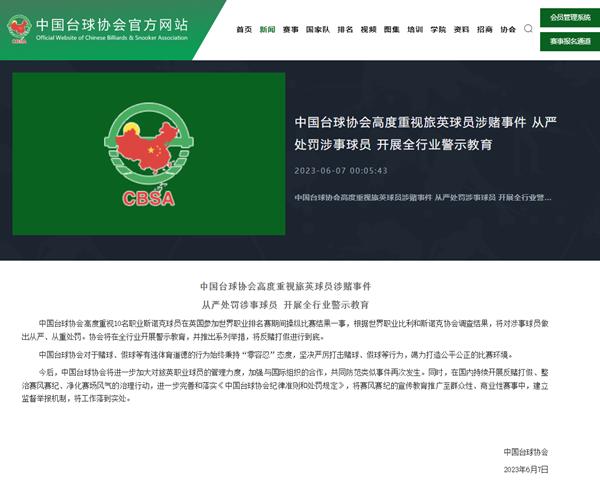
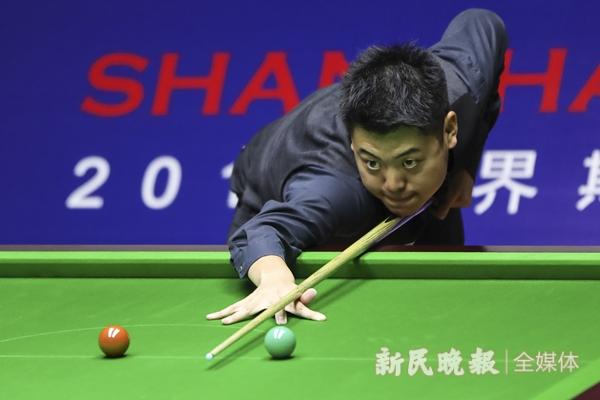
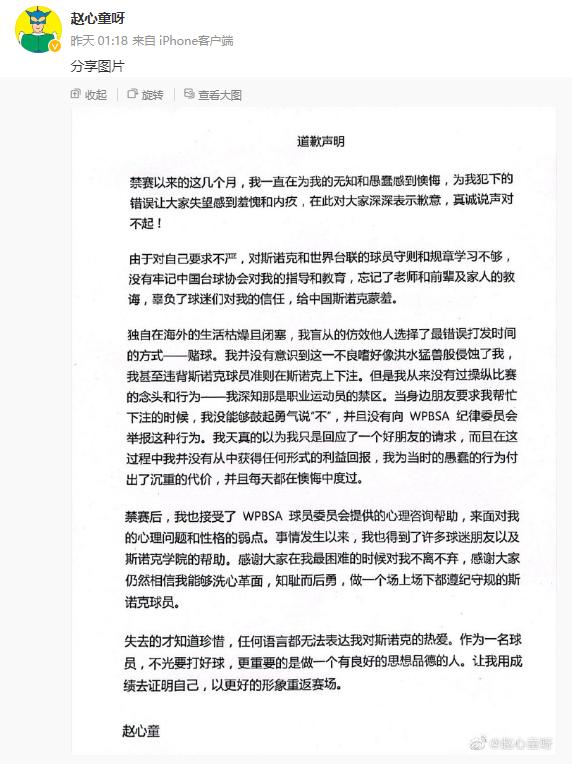
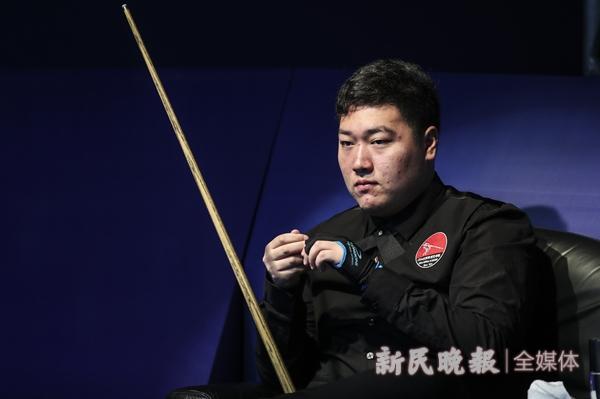
Cctv news (Reporter Li Wenliang) Selling a car and then having it stolen, even a car was sold for three times. Recently, the police in Jinan, Shandong Province lasted for half a year, starting with a car theft case, and destroyed a 30-member criminal group headed by Wang.
Wu Yanbing, deputy head of the Criminal Police Brigade of Lixia Branch of Jinan Public Security Bureau, said that during his 10 years in Jinan, the suspect Wang gradually evolved from an ordinary taxi driver into the chief criminal of a criminal group involved in black and evil. They formed a stable organizational system "Zhengdian Gang" by wooing fellow villagers, fighting, picking fights, extortion, theft and robbery, which greatly damaged the legitimate interests of the masses and had extremely bad social impact.
Selling cars and stealing cars, another case, the fugitive suspect is now in the air.
On January 22, 2018, Lixia police received a report from the victim Li Moumou that a black Magotan sedan mortgaged by a bank was previously purchased from Wang and others at a low price of 105,000 yuan, but the car could not be used normally due to incomplete procedures. Later, Li Moumou entrusted Wang and others to help sell the car, and the car was stolen during the sale.
After receiving the case, the First Squadron of Lixia Interpol quickly launched an investigation. On July 2, 2018, the car appeared in Tianjin, and the police immediately rushed to Tianjin and found that the actual user of the vehicle was Mu Mouhui, who was a cousin of Wang, both of whom were from Zhengdian, Laoling, Shandong Province. The police comprehensively analyzed and judged that the suspicion that Wang and others sold cars first and then stole them rose rapidly.
Subsequently, the police conducted an investigation around Wang and the people around him, and determined that the theft of the black Magotan car was the work of Zhang Mouzhi. Following this clue, it was found that Zhang Mouzhi was one of the fugitives who sought trouble with Wang and others in the police station area of Keyuan Road. On July 25, 2018, the police arrested Zhang Mouzhi.
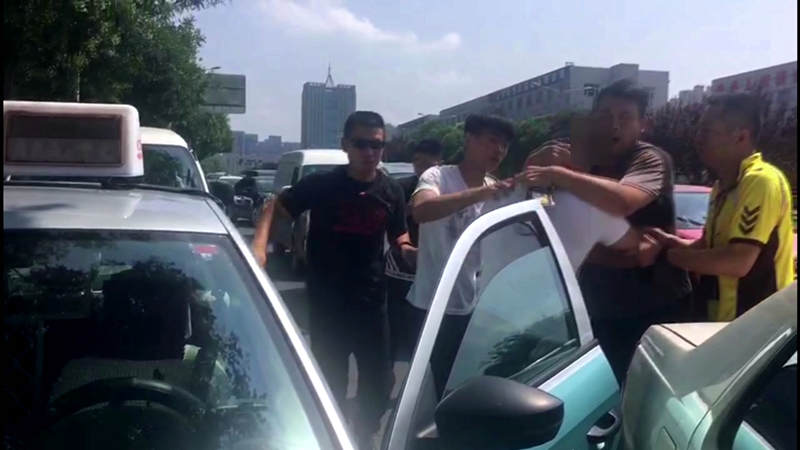
The picture shows the police arresting the scene. (Photo courtesy of Lixia Public Security Bureau of Jinan City)
Uncover the curtain of criminal groups
After in-depth investigation, the police found that this was not a simple car theft case, but a criminal gang involving more than 30 people headed by Wang, with Zhang Mowen, Zhang Mozhi, Zhang Mobin, Sun Moudong and Xia Mouyun as the backbone.
Wu Yanbing introduced that Wang, the leader of the gang, drove a taxi from Zhengdian, Laoling, to Jinan in 2008. He operated well and earned a lot of money. Later, Zhengdian’s fellow villagers all came to him. Wang anchored more than 20 cars in a taxi company. The fellow villagers who defected first took driving taxis as their main business, and formed an influential "Zhengdian Gang" in the taxi industry in Jinan, with a stable organizational system.
Through long-term covert development, the criminal gang gradually completed primitive accumulation of capital by operating hotels, business hotels and taxi companies as economic sources, and formed an enterprise management and business model. In the meantime, in the name of recruiting hotel waiters and taxi drivers, more than 30 members were developed.
In the daily management, the members of the gang use WeChat group, QQ group and taxi radio as contact methods, and contact in real time. Once people are needed to commit illegal crimes, people will be gathered immediately, which will have a quick response, many members and great social harm.
During his hotel management in Jinan, Wang bullied the city and competed viciously. In order to monopolize the regional market, he organized and implemented a large-scale affray. In April 2017, Wang, Zhang Mowen and Sun Moudong jointly invested to run a hotel in Heping Road, Lixia District. Because of the competition for tourists, they repeatedly had conflicts with the owner of an adjacent hotel. On May 11, 2017, there was a conflict between the two sides. Wang gathered more than 20 people at the entrance of the other hotel, and the two sides confronted each other, with more than 60 participants, and the social impact was extremely bad.
In addition, on April 19, 2017, the criminal gang was in a hotel on Huanshan Road, which also disturbed public order and caused trouble because of competition.
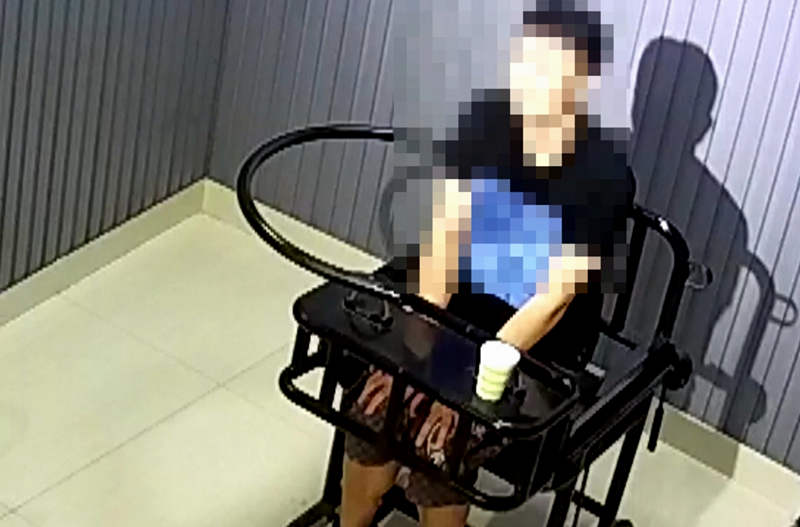
The picture shows the suspect being interrogated. (Photo courtesy of Lixia Public Security Bureau of Jinan City)
The gang "transformed" and falsely sold mortgage cars.
In the early days, the gang mainly disturbed public order and made troubles. In the past year, it gradually developed into crimes such as robbery, extortion and theft. In order to achieve the purpose of illegally accumulating wealth and obtaining benefits, the gang committed crimes continuously and repeatedly.
From September 2017 to January 2018, the criminal suspects Wang, Zhang Mouwen, Zhang Mobin, Xia Mouyun and others discussed together, and Wang invested to buy a bank-mortgaged vehicle. After buying the car, he assembled a locator and reserved a car key. After selling the car, he stole the vehicle back; Or, Xia Mouyun posted the information about selling mortgage cars on the Internet, and forged the relevant procedures of the car. When the buyer came to Jinan to trade, he defrauded the car purchase money and then gathered people to grab the car back.
In the name of falsely selling the mortgage car, the gang snatched, stole and cheated the mortgage car back by means of theft, robbery and fraud after selling the car or during the transaction. The car was sold six times, and one of the Volkswagen Tiguan cars was repeatedly sold three times.
At present, the criminal group headed by Wang has been smashed by the police. Since July 25, 2018, the police have arrested 28 illegal and criminal members of the group, including 21 people arrested and 7 people released on bail pending trial. It was initially verified that there were 9 criminal cases involving robbery, affray, theft, etc., and the property involved was worth more than 2 million yuan. What was waiting for them would be legal sanctions. (This article thanks Zhao Yang for providing the material)
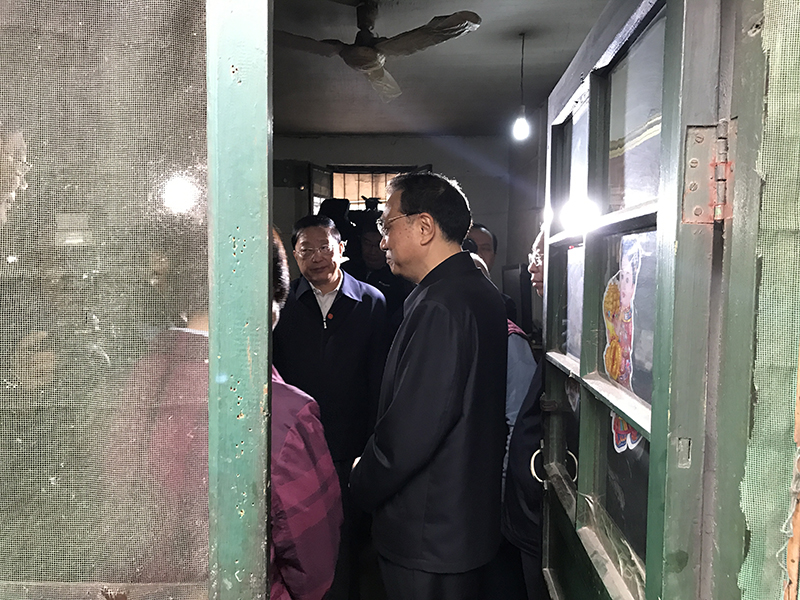

[Li Keqiang: shantytown renovation is not only a livelihood project, but also can promote the stable and healthy development of the real estate market] On the 21st, Li Keqiang visited the shanty town of Jingyi Road in Huaiyin District of Jinan. The area has been included in the 2017 Jinan shed reform plan, involving about 4,760 households. The Prime Minister told local officials that the shantytown renovation is not only a livelihood project to make up for historical debts, but also an important way to promote new urbanization and promote the stable and healthy development of the real estate market.


[What is this shack with three quilts to cover in winter? The Prime Minister walked in] Li Keqiang walked into the home of Zhang Shirong, a shanty town of Jingshiyi Road in Jinan on the 21st. The old man lived in this low-rise bungalow for 42 years, and kept warm by charcoal stove in winter. Because I have had four or five gas poisoning experiences, I dare not make a fire at night, and I need to cover three quilts in the coldest winter. After listening to the Prime Minister, can I have a look in the back room? He opened the door of the wardrobe, which was stuffed with bedding.


[Li Keqiang: shanty towns are "depressions" in the city, so this depression must be raised] Li Keqiang walked into the shanty towns of Jingshiyi Road in the center of Jinan on the 21st. Surrounded by high-rise buildings, the low bungalows here are in ruins. There is neither heating nor water in the room. The Prime Minister said with a dignified expression that shanty towns are "depressions" in the city. We must raise this depression and do our best to let you live in new buildings and lead a new life as soon as possible.


[Li Keqiang: This is your promise to the residents of shanty towns. You must do it! 】 Li Keqiang visited 87-year-old Wang Guilan’s home in the shanty town of Jingshiyi Road in Jinan on 21st. She and her wife have lived here for 56 years. The old man took the prime minister’s hand and asked, when can we live in a new home? The Prime Minister told the local leaders that you should specify the time limit. After getting an answer next year, the prime minister said, this is your promise to the residents of shanty towns, and you must do it!
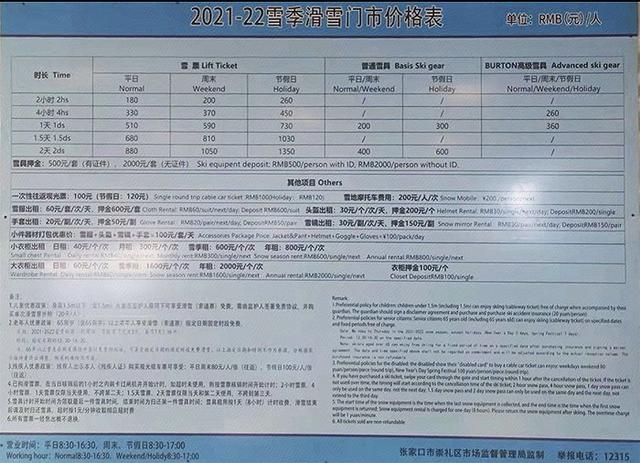

The Spring Festival is approaching. How do you celebrate the Spring Festival this year? Recently, Banan District launched the "Family Style and American Family Annual Meeting" activity, and it became a new folk custom of Banan people during the Spring Festival to establish family training, talk about dreams, talk about gains and losses, and send blessings.
The relevant staff in Banan District said: "We advocate the citizens to celebrate the New Year on the spot. We hope that through this activity, Banan people will inherit the family style and carry forward the excellent traditional culture of the Chinese nation while feeling the taste of the year, so that the year 2021 will be full of atmosphere and connotation."
Anti-epidemic advanced families: the dream of family reunion and Spring Festival group.
During the Spring Festival of 2020, Yang Jifan and Li Chunmei, who live in Lijiatuo, Banan District, failed to go home for the New Year because they struggled in the forefront of hospital epidemic prevention and control.
"A virus epidemic destroyed all my dreams of the Spring Festival." Yang Jifan’s son, Yang Herui, said, "But please rest assured, Mom and Dad, I won’t cry. I’m proud of you. I’m the doctor’s son …"
According to reports, Yang Yurui’s parents and grandfather are both medical staff. "Doctors are kind-hearted" is what Yang Herui’s grandfather often talks about. Slowly, it has become the family motto of Yang Herui.
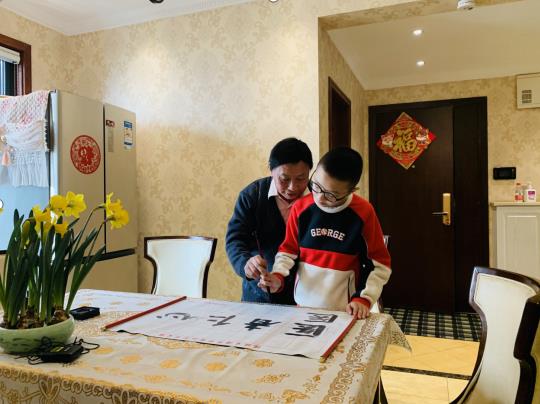
It is under the influence of such family precepts that Yang Herui understands that mom and dad can’t go home on time, "attend" the group dinner and have a group dinner together because of "saving lives".
Today (5th), under the call of the activity of "Family Style and Annual Meeting of American Family during the Festival" in Banan District, Yang Herui’s family realized their dream of group year.

In a small window of Lijiatuo Ronghui Jiangshan Community in Banan District, Yang Herui’s family is enjoying a reunion dinner. Prior to this, Yang Herui gave a handwritten newspaper named "I am proud, I am the doctor’s son" to my parents; Grandpa started to write down the family motto of "the doctor is kind" and taught Yang Herui the "connotation" in these four words with one stroke; Yang Herui’s family also pinched the "Mariko" symbolizing reunion together. ……
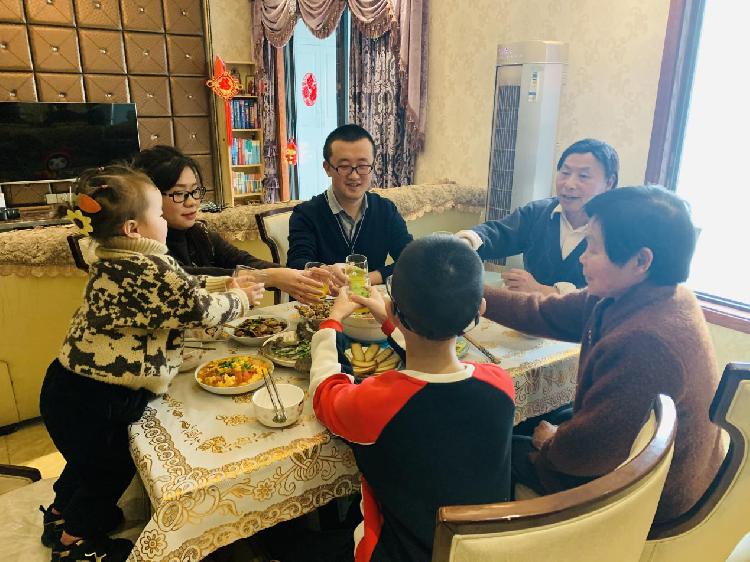
"In the past, Yang Heli’s grandfather told me about the’ doctor’s kindness’ and later told Yang Heli. I hope that I can also tell this sentence to my younger generations in the future, so that these four words can be passed down from generation to generation in our family. " Yang Jifan, the father of Yang Herui, said.
Five Good Families in China: "Cloud Reunion" Inheriting Family Style
In Lijiatuo Street, Banan District, there is another family holding a special annual family meeting.
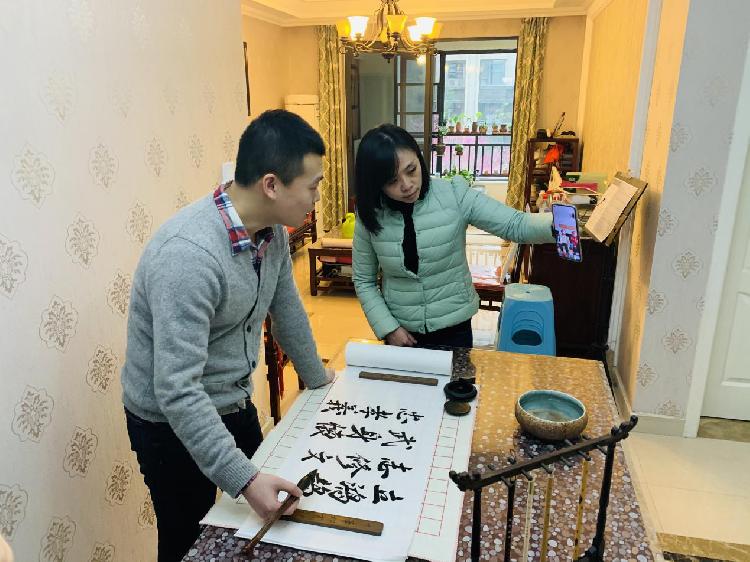
"I hope you can be people with goals, and I hope you can develop in an all-round way by practicing martial arts …" Facing the two little daughters in the video, Zhao Sikuo wrote the family instructions with a brush while explaining them.
Zhao Sikuo and Dong Tingting both work in the health system of Banan District. Affected by the epidemic, Zhao Sikuo and Dong Tingting will continue to stick to their posts during the Spring Festival. Because they are separated from their parents and daughters, this year’s Spring Festival, their family can only have a "cloud reunion" by video phone.
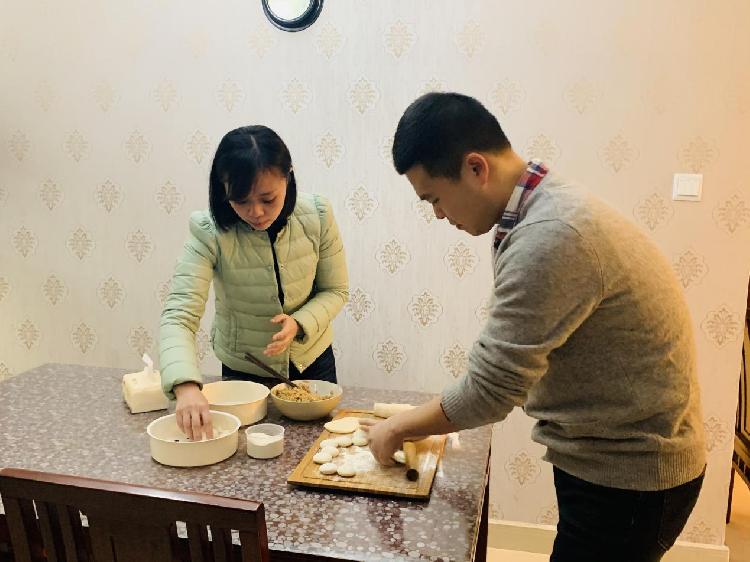
"Today, we will eat some sauerkraut jiaozi." Zhao Sikuo said, in my hometown in Northeast China, I will eat jiaozi on holidays. Plus, two people can’t eat much, and eating jiaozi can respond to the call of "eating civilization" and has a taste of the year. Facing the camera, Zhao Sikuo did not forget to teach children to cherish food and develop a good habit of thrift.
Zhao Sikuo’s family motto is "Set a lofty ambition, cultivate a strong body, be loyal, filial and righteous, and be single-minded". In 2020, this family motto was rated as one of the top ten most beautiful family precepts in Banan District in 2020, and Zhao Sikuo’s family was also rated as one of the five best families in China and the most beautiful family in Chongqing.
According to reports, in 2021, 2,152 party branches were launched in Banan district to publicize the annual family meeting before the festival, 121 primary and secondary schools took the annual family meeting home as a special winter vacation homework, and 200,000 families held annual family meeting activities during the Spring Festival according to their own conditions.
This activity will last until March. After the start of the new semester, schools will continue to carry out activities such as class meeting, team day, dream salon sharing meeting, etc., which will fully show the achievements of students’ participation in the annual meeting. After the holiday, various government agencies and units will also take advantage of theme party days and cadres’ and workers’ unions to organize cadres and workers to share the feelings of the annual meeting in time in the form of dream salons, so as to find out a group of families with stories, traditions and representatives, dig deep into the touching stories and beautiful sentiments of family style education, and enhance the new connotation and new image of family style construction in Banan District.
[Disclaimer] The texts, pictures, audio and video that are not marked with "Source: Upstream News-chongqing morning post" or "Upstream News LOGO" on the upstream news client are all reposted. If the reposted manuscript involves copyright issues, please contact the upstream news.
The temperature dropped a little this morning compared with yesterday, but the sunshine was good, and everyone’s somatosensory temperature remained in a relatively comfortable range. It will continue to be online on sunny days in the next two days, and it will gradually turn rainy in Guangzhou on weekends.
Despite the cold air, with the help of sunshine, the weather in Guangzhou is warm during the day. At 13: 25, Baishui Village Scenic Spot in Zengcheng District of Guangzhou recorded 25.1℃, the highest in the city.
The Meteorological Observatory predicts that most of Guangdong will be cloudy and sunny from January 10 to 13, with cold weather and dry weather in the morning and evening. Affected by the weak cold air, on January 10-11, there was a gust of 6-7 from the northeast to the east wind in central and eastern Guangdong. It’s cold in the morning and evening, pay attention to adding clothes in time; The wind is strong on the sea surface, so pay attention to offshore operation and traffic safety.
In the next three days, the humidity in the lower level is low and the north wind blows. Although there are clouds in Guangzhou, the clouds in the middle and upper levels are the main ones, and the sunshine is abundant. The low temperature is stable, and the maximum temperature fluctuates slightly. At the weekend, the humidity over Guangzhou became higher, and the clouds began to increase, accompanied by weak precipitation.
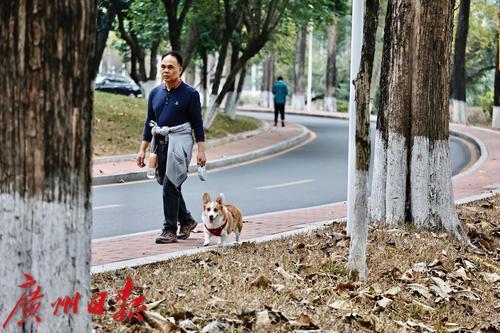
Guangdong specific forecast:
From January 11th to 12th, the western cities and counties were cloudy with sporadic light rain, while the rest were cloudy and sunny. The lowest temperature in the morning: 8 ~ 12℃ in northern and eastern Guangdong, 14 ~ 19℃ near the Pearl River Estuary and western Guangdong, and 12 ~ 14℃ in other cities and counties.
On January 13th, it was cloudy with scattered light rain in Shaoguan, Qingyuan, western Pearl River Delta and western Guangdong, and the rest cities and counties were cloudy. There is light fog in the western cities and counties in the morning. The lowest temperature in the morning: 10 ~ 13℃ in northern and eastern Guangdong, 15 ~ 20℃ near the Pearl River Estuary and western Guangdong, and 13 ~ 15℃ in other cities and counties.
Guangzhou weather forecast:
It was cloudy at 12 ~ 21℃ on January 11th.
It was cloudy at 13 ~ 23℃ on January 12th.
On January 13th, it was cloudy to cloudy at 14 ~ 22℃, with scattered light rain.
Text/Guangzhou Daily Xinhua City Reporter: Yekas
Figure/Guangzhou Daily Xinhua City Reporter: Gao Hetao
-Israel invaded Lebanon
On June 6, 1982, on the pretext that its ambassador to Britain was assassinated by Palestinian guerrillas, Israel dispatched more than 100,000 army, navy and air force to launch a large-scale attack on the Palestine Liberation Organization guerrillas and Syrian troops in Lebanon. It took only a few days to occupy half of Lebanon. This is the biggest war between Israel and Arab countries since the death of four Middle East wars, and it is called the "Fifth Middle East War".
War background
Generally speaking, the cause of the Lebanon-Israel war is still the continuation of the Palestinian dispute. The main purpose of Israel’s invasion of Lebanon is to destroy the Palestine Liberation Organization, seek to establish a pro-Israel regime in Lebanon and crowd out Syrian troops in Lebanon.
In order to establish their own country, the Palestinians established the Palestine Liberation Organization in May 1964 and launched a war with Israel. The PLO guerrillas are based in neighboring Arab countries, mainly in Syria and Lebanon. In 1970, the headquarters of the PLO and the main guerrilla force led by it entered Lebanon from Jordan, and later directly intervened in Lebanon’s domestic struggle, propped up and armed Islamic forces, and cracked down on pro-Israel Christian forces, gradually taking control of southern Lebanon and Beirut, the capital, and becoming a "country within a country". And build military facilities, attack and shell northern Israel from time to time, especially in the fourth Middle East War, the PLO guerrillas assisted Egyptian and Syrian troops to launch guerrilla warfare and attacked Israeli military bases, warehouses and radar stations. Become a menace to Israel.
In 1982, Israel felt that the time had come: first, the war between Britain and Oman broke out and became the focus of international attention; Secondly, the Iran-Iraq war continues, and the two countries have no time to take care of it. There are contradictions between Arab countries that support Iran and Iraq, and the Arab world has been torn apart; Third, the domestic situation in Syria, which may support and cooperate with the PLO in the war, is unstable, and there are also contradictions between Palestine and Syria; Fourth, we can use the pro-Israeli forces in Lebanon-Christian armed forces; Fifth, after the return of Sinai Peninsula, Egypt and Israel have reached a settlement, and Egypt will not get involved in the war.
Military forces of all parties before the war
I. Armed forces in Lebanon
1. PLO Armed Forces
The PLO armed forces are mainly PLO guerrillas, with a total of about 25,000 people (including 6,000 field troops), which are organized into 50 battalions, 300 tanks, 300 armored vehicles and 1,100 guns.
Distribution of main forces: there are about 6,000 troops in the western part of Beirut, 8,000 troops in various positions in the south, 5,000 troops in the Bekaa Valley, and the rest are deployed in northern Lebanon. The PLO guerrillas have more than 400 warehouses in southern Lebanon, storing a large number of weapons, ammunition and other military supplies.
2. Syrian Army in Lebanon
2 armored brigades, 2 mechanized infantry brigades, 1 assault battalion and air defense units, totaling 30,000 people. After the war broke out, four more brigades were invested, bringing the total strength to 46,000, with 900 tanks, 600 armored vehicles and 350 planes.
The main forces are subordinate to Bekaa Valley, Jazzin Region and Shufu Mountain. Some troops are stationed in Beirut West Zone, Tripoli and major towns along the strategic road from Beirut to Damascus.
3. United Nations peacekeeping forces
It consists of 7,000 troops from France, the Netherlands, Norway, Fiji and Nepal, and is stationed on the common border between Lebanon and Israel.
4. Lebanese government forces and various armed forces
There are more than 23,700 Lebanese government troops, including one mechanized infantry brigade, one armed reconnaissance battalion, nine infantry battalions, one artillery battalion, more than 200 armored vehicles and 230 guns. In addition, it is also equipped with "Milan" and "Tao" anti-tank missiles. It is mainly stationed in the eastern part of Beirut and parts of northwest Lebanon.
In addition to government forces, there are more than 40 armed forces in Lebanon, mainly including:
(1) The Muslims armed Shiites, Druze and Sunnis, with a total of about 20,000 full-time armed personnel, are in opposition to the Christian Pike Party.
(2) haddad militia is a pro-Israel force, with about 36,000 people, deployed in the 8-10 km zone of Lebanon on the border with Israel.
(3) The Christian Phalangist militia, led by Bacher Gemayel, has more than 40,000 people, and is stationed in the east of Beirut, north of Beirut-Damascus highway and northwest Lebanon.
Second, the Israeli army
There are 15 brigades, more than 100,000 people, 1,500 tanks, 1,500 armored vehicles, 400 planes and more than 20 ships.
War course
In the first stage (June 4-13), Israel launched a full-scale attack, and the PLO and the Syrian army suffered heavy blows, and the Israeli army surrounded the western part of Beirut.
On June 4, Israel dispatched planes to attack Beirut and the PLO guerrilla base in southern Lebanon.
At 11 o’clock on June 6, the Israeli army dispatched four brigades with about 20,000 people. After five hours of artillery and aviation fire preparation, with the support of helicopter gunships, naval, air and artillery fire, it launched a sudden attack on the PLO guerrillas in the west, middle and east on the front of 53 kilometers wide.
1, the ground forces attack
The West Road is the main direction of the Israeli army, and has invested more than five brigades. The first echelon, with two armored brigades, each with 200 tanks and armored vehicles, set out from Nahariya and Rushhanikla, surrounded Sur in Nakura and Bint Jubail through the areas controlled by haddad militia and United Nations forces, and launched siege fighting with the cooperation of airborne troops and landing troops and Lebanese haddad militia. At that night, it carried out street fighting and was attacked by the PLO guerrillas. Two brigades of the second echelon (an armored brigade and a mechanized brigade) entered the battle at 1800 hours, and one of them moved eastward to cooperate with the middle road; A brigade marched northward to encircle the PLO guerrillas south of the Litani River. On the 8th, the third echelon of the Israeli army entered the battle, continued to attack the north and surrounded Damour. However, to the south of the city, Saadia, only 19 kilometers away from Beirut, was stubbornly resisted by the PLO guerrillas, and its northward advance was blocked. On the 9th, West Road Israeli troops occupied Sidon and Damour, and landed in Halda with a battalion of troops. When the PLO troops retreated from Damour, they blew up the bridge. On the 10th, the Israeli army, consisting of 6 brigades, 35,000 men and more than 300 tanks, with the cooperation of Christian right-wing militia from the north, besieged Beirut and bombed Beirut’s western and southern suburbs international airports in turn. Israeli ships blocked Beirut from the sea. The PLO made great efforts to strengthen the defense in Beirut West Area and repelled the Israeli attack at the international airport and Halda area. The PLO armed forces killed Major General Yekutiel Adam, the commander-in-chief and deputy chief of staff of the Israeli army near Damour. On the 11th,The main force of the Israeli army arrived near Beirut International Airport, and the other part fought against the Syrian army. In order to negotiate with the PLO, Syria declared a ceasefire with Israel according to Israeli conditions when the PLO was in extreme difficulties, and the ceasefire took effect at 12 o’clock local time. Since then, Syria and Israel have stopped fighting. On the 12th, the Israeli army continued to attack the PLO position in the southern suburbs of Beirut, which met with stubborn resistance from the PLO armed forces. At 19: 00 GMT, the ceasefire between Israel and Palestine came into effect. Seven hours later, the two sides opened fire again. On the 13th, the Israeli army entered the eastern part of Beirut, and immediately, with the cooperation of the Phalangist militia, the Israeli army surrounded about 8,000 PLO guerrillas in the western and southern parts of Beirut.
With the middle road as the direction of assist, a brigade, the first echelon of the Israeli army, set out from Shemola area on the morning of 6th, crossed Haldali, surrounded Fort Shojaei, and the main force Nabatiyah attacked. On the afternoon of the same day, the Israeli army began to storm Fort Shojaei and conquered it at dawn on 7th. An armored brigade of the second echelon entered the battle, besieged Nabatiyah with the cooperation of paratroopers, and broke into the city at 9: 00 on the 7 th. A small number of troops started street fighting with the PLO guerrillas, and the main force continued to advance northward, and the day before yesterday, it went out to Jiejin area. With the cooperation of the Israeli army on the East Road, after the capture of Jiejin City, they divided into two roads, all the way west, and participated in the siege of Zahrani and Saida; Journey to the south, attacking Syrian armored forces in Shufu area, launched a tank battle with Syrian army there. The Syrian army lost 150 tanks. On the 9th, Israeli troops parachuted near Aindala. With the cooperation of airborne troops, the ground troops captured Aindala, and then took control of the Beirut-Damascus highway.
East Road is the containment direction, and an armored brigade of the first echelon of the Israeli army launched an attack on Sheba. Later, it developed an attack on the Bekaa Valley, containing and monitoring this direction, and cutting off the ties between the PLO guerrillas and the Syrian army. On the 7th, after the first echelon captured Sheba, the second echelon entered into battle and launched an attack on Hasyaba. After succeeding, it launched an attack on Syrian defensive positions in Lasia and Kaukaba. On the 8th, after capturing the towns of Lasia and Kaukaba, they marched northward along the west side of Bekaa Valley, pointing to the last section of Beirut-Damascus Highway, in an attempt to cut off the Syrian army’s retreat and block reinforcements. On the 10th, the Israeli army fought fiercely with the Syrian army in the east of Lake Karun, killing an armored brigade of the Syrian army. From September 9 to 11, Syria lost about 150 tanks in the battle.
2. Air combat in Bekaa Valley
In order to seize the air superiority, Israel decided to attack Syria’s missile base in Bekaa Valley to eliminate its air defense capability. This is also one of the main purposes of the Israeli invasion of Lebanon.
Bekaa Valley is located in the eastern part of Lebanon near the Syrian border. It is a long and narrow strip from south to north. The mountains on both sides of the valley are continuous and the terrain is dangerous. The main ground troops stationed in Lebanon are deployed here. In order to protect this unit from Israeli air strikes, Syria has deployed air defense units with Sam-6 missiles as the main equipment in the Bekaa Valley since May 1981.
At about 2 pm on June 9, the Israeli army dispatched 96 F-15 and F-16 fighter planes for high-altitude cover, and under the command of E-2C early warning aircraft, F-4 and A-4 attack planes bombed the missile base in the Bekaa Valley violently.
When the Syrian army learned of the Israeli air raid, it dispatched more than 60 MiG-21 and MiG-23 fighter jets from all over the country, gathered in Bekaa, and launched an air battle with the Israeli army. Due to the electronic interference of the Israeli army, the Syrian army aircraft lost contact with the ground after taking off, and the anti-aircraft missiles also lost control after launching. The quality and equipment of Israeli pilots were better than those of the Syrian Air Force, and they took the initiative in the air. However, the Syrian Air Force was inflexible in tactics and relied too much on the command of the ground command post, resulting in passive beatings in the air. On the first day of air combat, the Israeli army destroyed 19 positions of Syrian air defense missile company and shot down 29 Syrian aircraft. On the 10th, the Israeli army dispatched 92 planes of various types to attack the Syrian army’s Lebanese command post and the nearby air defense missile base. The Syrian army took off 52 planes to fight, and as a result, 25 planes were shot down and 7 air defense missile companies were destroyed. Syria has been operating in the Bekaa Valley for more than 10 years, and the air defense system costing $2 billion was destroyed, while Israel lost only 10 aircraft, including 6 drones and helicopters.
It took only eight days (June 6-13) for the Israeli army to advance more than 90 kilometers, occupy about 3,000 square kilometers of Lebanese territory, destroy all the bases of the PLO guerrillas in southern Lebanon, wipe out a large number of PLO effective forces, seize all the PLO warehouses in southern Lebanon, and surround the PLO headquarters with 2,000 people and 5,000 armed men in the west and south of Beirut. At the same time, it dealt a heavy blow to the Syrian army.
In the second stage (June 14th-September 15th), the PLO withdrew from the west area of Beirut, and the Israeli army won.
On June 14th, after fierce fighting, the Israeli army took control of the runway of the international airport. On June 16th, with the cooperation of the Phalangist militia, the Israeli army captured the Science College Building, an important stronghold for controlling the airport. On the 17th, the Israeli army shelled the international airport and nearby areas, took control of Hadile International Airport, and further reduced the siege of the PLO headquarters. On the 18th, the Israeli army announced a ceasefire to the besieged PLO, but demanded that it lay down its arms and withdraw from Beirut, which was rejected by the PLO. On the 22nd, the Israeli army attacked the Syrian army again, and occupied Hamdoon, forcing the Syrian army to retreat, thus tightly controlling the west area of Beirut.
From June 26th, the Israeli army continued to strengthen its troops surrounding the West Beirut and its defense against the Syrian army. By July 18th, the troops surrounding the West Beirut had increased to about 35,000 men in seven brigades, with about 700 tanks and 710 large-caliber artillery pieces. Trying to cooperate with political negotiations with military pressure, forcing the PLO to withdraw from Beirut West Area.
On June 27th, the seventh emergency special session of the General Assembly adopted a resolution demanding that Israel cease fire immediately and withdraw its troops from Lebanon unconditionally. At this time, in order to preserve its strength, the PLO agreed to leave Beirut West. On the 28th, the PLO put forward three conditions for Israel to withdraw from Lebanon: (1) Israeli troops should withdraw 5 kilometers from the south of Beirut; (2) Keeping a symbolic Palestinian military unit in the Lebanese army; (3) Keep the political structure of the PLO in Beirut. Israel rejected these three conditions, demanding that relevant PLO groups must surrender their arms to the Lebanese Army and all PLO members should withdraw from Beirut and Lebanon. On July 6, the PLO refused to be escorted by the US military, demanding that a multinational peace force be deployed in Beirut to escort the PLO armed forces to evacuate safely. On August 1st, the Israeli army captured the international airport, entered the museum area in the west area of Beirut on the 4th, surrounded the PLO headquarters building on the 5th, and bombed the PLO headquarters building on the 6th. During this period, the Israeli army also bombed the Bekaa Valley.
On August 12th, PLO announced its willingness to withdraw from Beirut West Zone. From August 21st to September 1st, more than 12,000 PLO headquarters and guerrillas were evacuated from Beirut West Zone to eight Arab countries including Jordan, Iraq, Tunisia, Sudan, Syria, Algeria, South Yemen and North Yemen. 25,000 Syrian soldiers stationed in Beirut West also withdrew to Bekaa Valley on August 30th and September 1st. From 21 to 25, French, American and Italian soldiers of the multinational force arrived in Beirut in batches to perform the task of guarding the withdrawal of the PLO and Syrian troops from the western part of Beirut. On September 10-13, the multinational forces also left Lebanon one after another.
On September 15th, the Israeli army moved into the west area of Beirut on the grounds that Lebanese President Bacher Gemayel was killed. Under the pressure of international public opinion, on September 29, the Israeli army withdrew, and multinational peace forces returned to Beirut West District to maintain order. But a large number of Israeli troops still occupy it. After five months of negotiations, Lebanon and Israel signed a withdrawal agreement. However, both Syria and the PLO opposed this agreement and the agreement was abolished. Since then, the Israeli army has unilaterally withdrawn from Lebanon in batches.
In this war, more than 3,000 people were killed or injured in the saline-alkali land of the PLO, more than 100 tanks were destroyed, 500 guns were fired, and more than 400 secret warehouses were occupied. The Syrian army suffered more than 1,000 casualties, lost more than 400 tanks and 58 aircraft.
(Excerpted from The Story of Major World Military Events after World War II, edited by Xie Zhaohui and Luo Qingwang)
Editor: Wang Yuxi